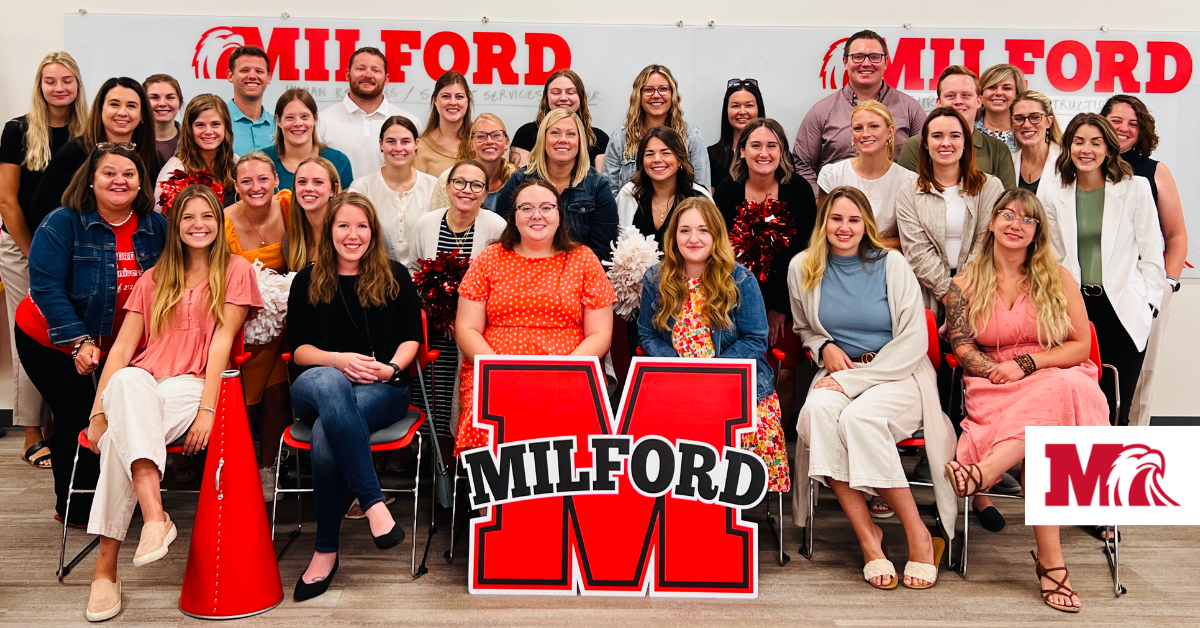The public meetings are over. The sharply-designed professional graphics have been created. And now it’s time for the rubber to meet the road: Your district has created a Portrait of a Graduate, but it is up to your staff to deliver on those promises. Do you have the right people?
Educational leaders who seek out Battelle for Kids’ HumanCapital21 (HC21) Essentials training are looking for tools to hire great employees across their entire organization, and to support the work behind their Portrait of a Graduate. When the training is complete, leaders have multiple strategies to help level up their approach to human resources.

And what happens when a district commits to using the entire HC21 Essentials toolbox?
Milford Exempted Village Schools in southwest Ohio has gone all in on BFK’s principles of “align, find, grow, and keep” when it comes to staffing for all district positions. And judging from retention data and employee feedback, their methods are paying dividends.
Superintendent John Spieser and Jennie Berkley, assistant superintendent for human resources and student services, wanted to continue to “pour into their people” following the creation of their Portrait of an Eagle in 2021.
“We keep coming back to what Jennie always says, that the organization is only as strong as the people who serve the stakeholders,” Spieser said.
The district employs 790 people, including 380 teachers.
Milford joined a cohort of districts who completed the intensive HC21 Essentials professional learning experience, which helped them refine – or create – practices for recruiting, hiring, onboarding, and growing district employees.
A key part of HC21 Essentials is asking for and listening to employee feedback. For many years, Milford distributed the Top Workplace survey to its employees annually. But the data generated by that survey did not allow them to dig in and improve the employee experience. In order to have actionable data, Milford moved to the Gallup Q12 survey, which gave a more in-depth look at employee sentiment. The district also conducts exit interviews and “stay” interviews to find out what is going right in an employee’s position.

In an age where teachers are leaving education in record numbers, Milford is proud of its high retention rate. In fact, in the 2021-2022 school year, only 13 of 348 teachers departed. Because of their commitment to data, Milford knows why the 13 left: three retired, seven resigned and six left the teaching field.
From the time a position comes open and even before, Milford is intentional about who their next employee will be. For example, the district sends a large team to college job fairs to get an early look at new teaching candidates. And they don’t just sit behind a display board.
“At job fairs, we are actively engaging saying, ‘Come interview with us,’” Spieser said. “We take five people with us, and we all fill up interview slots for the whole day. We’ll talk to 50 or 60 candidates in a day.”
Berkley said their employee screener and interview questions have been updated and recalibrated to fit the district’s human resource goals. When the district is ready to hire a particular candidate, Milford has designed an onboarding process to make the new hire immediately feel part of the team.
New employees can choose a date in May, June, July, or August to go over human resources “nuts-and-bolts,” like payroll, insurance, leave time, etc. with central office staff. But all certified and exempted staff are invited to Milford University, the two-day orientation at the beginning of each school year. On the first day, the year’s group of new hires is introduced to, cheered, and supported by the district’s leadership team.
“Every administrator in the district comes and surrounds them in a circle to really cheer them on. It lets them see how many people came through the district, and the growth you can see,” Berkley said. “It’s a big circle and a little circle.”

The second day of orientation is very personalized for teachers, after Milford heard feedback from previous new hire cohorts.
“The feedback was that they needed more time with curriculum and the curriculum specialists,” she said. “Now it is all led by teacher-leaders. They are the people in the trenches, and they are the experts in that curriculum. They each take that group and teach them.”
Is Milford University worth the investment at the busiest time of the year?
“New hires come in Day One and nobody is talking, but by the end of Day Two, they’ve already jumped in and are ready!” Berkley said. “Your district culture will start to take on what your new staff looks like because they are bringing their forward thinking.”
Battelle for Kids chief learning officer Tony Bagshaw said Milford’s intentional approach to its personnel is showing in the numbers.
“They will tell you: We don’t lose anybody anymore because they aren’t feeling valued,” he said. “They have turned their people systems from compliance and a ‘get-er-done’ set of processes into a strategic lever that can help them win for their kids and their community.”

